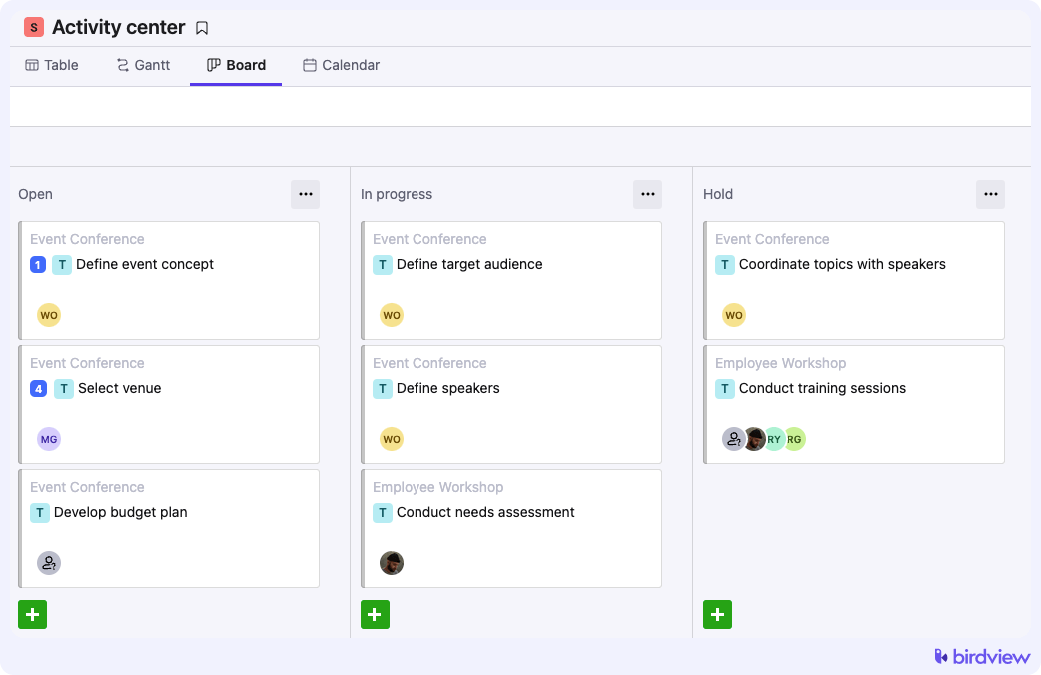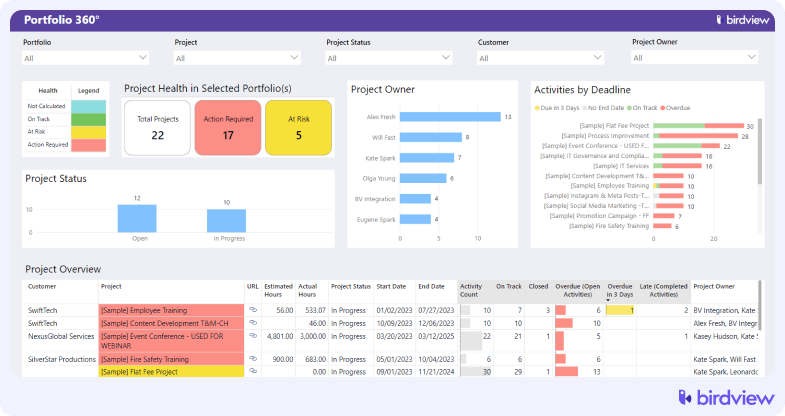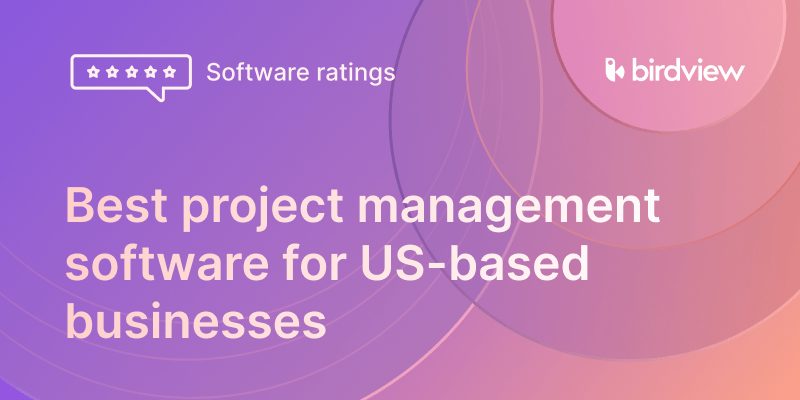In the not-so-distant past, IT services revolved around linear progressions–strict timelines, rigid phase gates, and detailed upfront planning. The Waterfall methodology reigned supreme. It offered predictability and structure, but at a cost: limited flexibility, high risk of rework, and poor responsiveness to change. As digital demands outpaced traditional delivery models, something had to give.
Agile wasn‘t just a shift in methodology–it was a revolution. Born out of software development‘s frustration with Waterfall‘s constraints, Agile introduced a dynamic, collaborative, and iterative approach. But Agile couldn‘t function on mindset alone. It needed infrastructure–tools that could facilitate fast feedback loops, cross-functional collaboration, and constant iteration. That‘s where project management software became indispensable.
From Gantt charts to Kanban boards: Agile‘s rise in IT project management
Traditional project management hinged on predictability. Gantt charts, task dependencies, and critical paths formed the backbone of delivery planning. This model worked well for manufacturing and construction but struggled under the ambiguity of software development. When requirements changed mid-project, which they often did, Waterfall‘s inflexibility became a liability.
Agile replaced this rigidity with continuous delivery and customer-centricity. Daily standups, backlog grooming, and sprint planning became the new normal. Suddenly, static spreadsheets and disconnected tools couldn’t keep up. Project management software had to evolve–from passive trackers to active enablers of agility.
Modern platforms began to mirror Agile principles: fluid workflows, collaborative task boards, real-time updates, and built-in retrospectives. Kanban boards replaced Gantt charts as visual planning tools. Burn-up and burndown charts became key metrics. The software no longer just recorded progress–it orchestrated it.

How project management software powers Agile IT services
For IT service teams, agility isn’t a luxury–it’s a survival tactic. Whether responding to cybersecurity threats, deploying microservices, or troubleshooting APIs, teams must adapt quickly and make decisions with incomplete data. Project management software provides the scaffolding that makes this possible.
- Sprint Management & Iteration Cycles: Agile thrives on short, repeatable cycles. Sprint planning, execution, and retrospectives need a structured yet adaptable framework. Tools like Jira or ClickUp allow teams to define sprint goals, assign tasks, and visualize progress. The software provides a shared language across roles, from developers to product owners.
- Real-Time Collaboration: Agile emphasizes communication. Daily standups, asynchronous updates, and peer reviews are vital. Integrated project management platforms ensure everyone sees the same information–no more versioning nightmares or outdated task lists.
- Backlog Grooming & Prioritization: Backlogs are living documents. New features, bug reports, and customer feedback constantly shift priorities. Effective project management software enables dynamic reprioritization with minimal friction. Drag-and-drop functionality, dependency mapping, and tag-based categorization are now standard.
- Velocity & Analytics: Unlike Waterfall‘s “plan everything upfront” model, Agile needs real-time insights. How many points were completed this sprint? Which epics are at risk? Project management tools provide dashboards and analytics that inform adaptive planning.
- Cross-Team Visibility: Many IT services teams function in pods–DevOps, cybersecurity, infrastructure, QA–all contributing to a shared goal. Project management software bridges silos by offering a centralized view of work across domains.
Agile IT services beyond software development
While Agile began in software development, its principles are now being applied across broader IT services. Infrastructure management, support ticketing, and even compliance initiatives are being “Agile-ized.” Here, too, project management software plays a pivotal role.
For instance, consider a cybersecurity incident response team. Instead of following a fixed checklist, teams use Agile workflows to triage threats, update response protocols in real-time, and adjust priorities based on threat intelligence. Or take cloud infrastructure: with ephemeral environments and containerized deployments, teams must manage infrastructure as code–another domain where agility is paramount.
In both cases, the right project management platform ensures that changes are tracked, teams are aligned, and insights are surfaced quickly. Project management software isn‘t just facilitating Agile work–it‘s redefining how IT services are delivered altogether.
Top project management software tools supporting agile IT
As organizations embrace agility, selecting the right tools becomes critical. While many platforms market themselves as “Agile-ready,” only a few offer the depth and flexibility needed to truly support iterative, fast-paced environments.
In this landscape of rapid digital transformation, businesses are increasingly turning to specialized platforms to keep pace. That‘s where the top project management software tools come into play, offering tailored features that align with Agile frameworks.
These solutions streamline team collaboration, task prioritization, and sprint planning–all essential for Agile success. By leveraging such tools, organizations can boost transparency, adaptability, and speed in their IT operations.
Some of the top project management software tools enabling Agile IT services include:
- Birdview PSA: Designed for service-based organizations, Birdview PSA supports Agile project delivery with features like sprint planning, task boards, real-time resource visibility, and custom workflows. IT teams benefit from integrated time tracking, workload balancing, and project accounting–all within a single platform built to scale Agile across portfolios.
- Jira: Originally built for developers, Jira remains the go-to tool for software-centric Agile teams. Its support for Scrum, Kanban, and hybrid models is robust, and its plugin ecosystem allows for deep customization.
- Asana: Known for its clean UI and task-centric design, Asana supports Agile workflows with timeline views, board views, and workload balancing.
- ClickUp: A newer entrant, ClickUp offers extreme flexibility with multiple view options, time tracking, and automation features–useful for IT teams juggling diverse project types.
- Trello: Ideal for smaller teams or lightweight Agile workflows, Trello‘s board-based system brings simplicity without sacrificing core Agile features.
- Monday.com: With strong automation and visual planning tools, Monday.com is popular among cross-functional IT teams and business units alike.
Each of these tools provides a different flavor of agility. Some are optimized for software engineering; others excel at enterprise-wide alignment. The key is choosing a platform that adapts to your team‘s rhythms, not the other way around.
Tooling alone isn‘t Agile: Culture still reigns
While project management software is crucial, it‘s not a silver bullet. Organizations often mistake tool adoption for transformation. Implementing Agile rituals inside Waterfall cultures just creates chaos with a different name. Standups become status meetings. Sprints become mini Waterfalls. Teams burn out trying to be “Agile” without understanding the why behind it.
True agility requires a shift in values: trust over control, responsiveness over rigidity, experimentation over perfection. Tools can support these values, but they can‘t enforce them. A high-functioning Agile team uses its project management software to enhance clarity, not micromanage tasks.
That means using dashboards to surface blockers, not to shame lagging contributors. It means retrospectives aren‘t checkboxes–they‘re safe spaces for feedback. It means backlogs aren‘t dumping grounds–they‘re strategic assets.
In other words, Agile tooling must reflect Agile thinking. Without the right culture, even the top project management software tools become glorified to-do lists.
Scaling Agile IT with portfolio management software
Agility gets complicated at scale. When multiple teams contribute to a shared product or service, coordination becomes harder. This is where portfolio-level project management software steps in.
Platforms like Birdview PSA, Jira Align, Wrike, and Smartsheet enable organizations to link strategic objectives with tactical execution. Roadmaps, OKRs, and cross-team dependencies can be visualized and adjusted in real-time. This level of visibility allows leadership to make informed trade-offs–balancing innovation with stability, speed with compliance.
IT services, especially in large enterprises, often juggle hundreds of initiatives across teams. Portfolio dashboard tools bring order to this chaos, ensuring that Agile principles don‘t get lost in translation.

Compliance and documentation in Agile IT project management
One of Waterfall‘s few advantages was its paper trail. When everything was planned upfront, documentation naturally followed. Agile, by contrast, often struggles with traceability. This poses challenges for IT services dealing with regulatory compliance, audits, or client SLAs.
Modern project management software addresses this tension by automating documentation. Every comment, status change, and task update is logged. Custom fields and templates ensure that compliance requirements aren‘t forgotten. Audit trails are no longer a burden–they‘re built into the workflow.
This evolution is vital for Agile IT. It enables speed without sacrificing accountability. It ensures that agility doesn‘t come at the cost of transparency.
The future of Agile IT: AI-driven project management
As Agile matures, the next frontier is intelligence. AI and machine learning are beginning to reshape project management software in subtle but profound ways.
AI assistants now suggest sprint planning improvements based on team velocity. Natural language processing helps turn meeting notes into backlog items. Predictive analytics warn when timelines are likely to slip–even before the team realizes it.
For IT services, this evolution is game-changing. As systems become more complex, teams need more than visibility–they need foresight. AI-powered project management doesn‘t just show where the work is. It shows where it‘s going.
But just like with Agile itself, AI is only as good as the culture using it. Tools should augment judgment, not replace it. Insights should provoke conversation, not override it.
The market for project management software was estimated to be worth USD 6.59 billion in 2022 and is expected to grow at a compound annual growth rate (CAGR) of 15.7% from 2023 to 2030, reaching USD 20.47 billion. This growth is driven by the increasing need for organizations to efficiently manage projects in a rapidly changing business environment. AI-powered project management tools are expected to play a key role in helping teams adapt and thrive in this evolving landscape.
Conclusion: Agile isn‘t a tool – it‘s a tension
Agile is not a destination. It‘s a perpetual tension between speed and strategy, innovation and structure, freedom and responsibility. Project management software doesn‘t resolve this tension–it gives teams the scaffolding to hold it without breaking.
In the world of IT services, where needs shift by the hour and complexity is the norm, this scaffolding is indispensable. Waterfall taught teams how to build cathedrals. Agile–and the tools that power it–teach them how to build sandcastles that evolve into fortresses, one wave at a time.
And as IT continues to blur the lines between development, operations, and service, the role of project management software will only deepen. It‘s not about managing tasks. It‘s about choreographing chaos. And done right, it‘s the difference between being fast and being truly adaptive.



